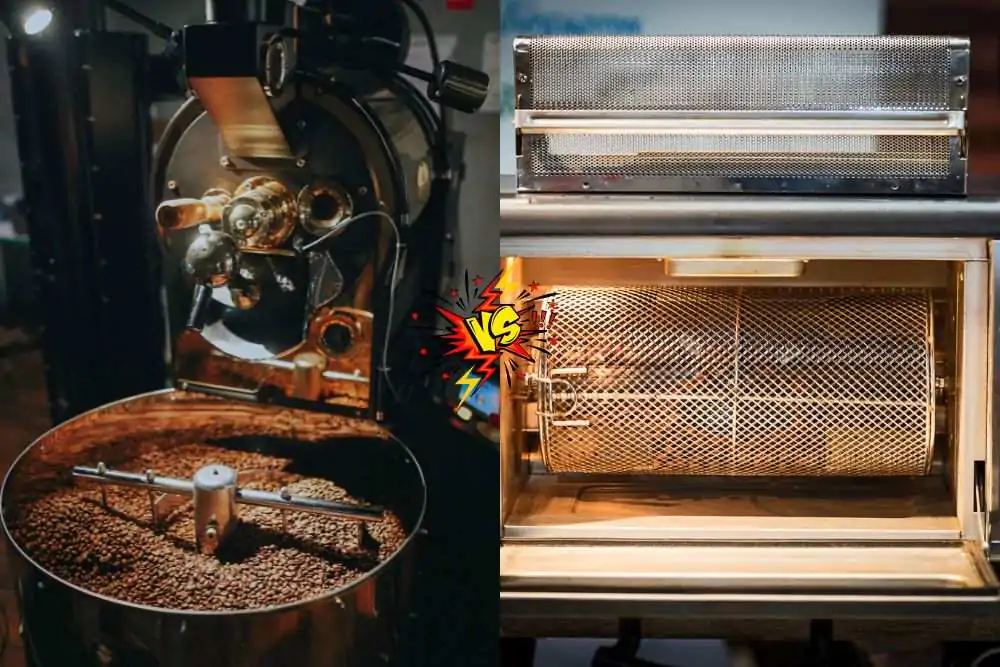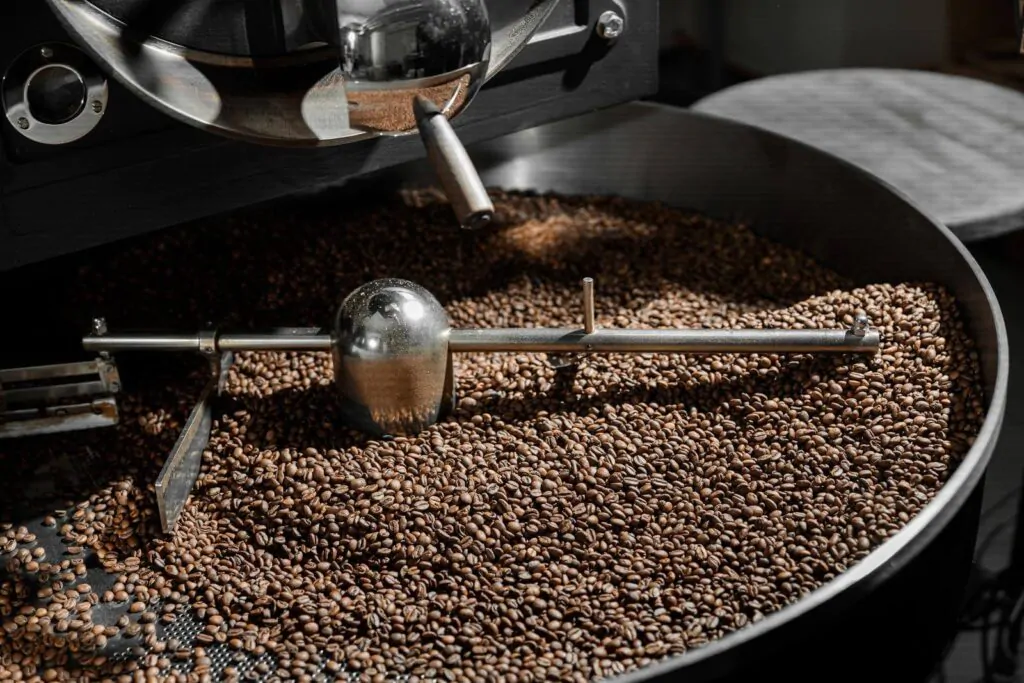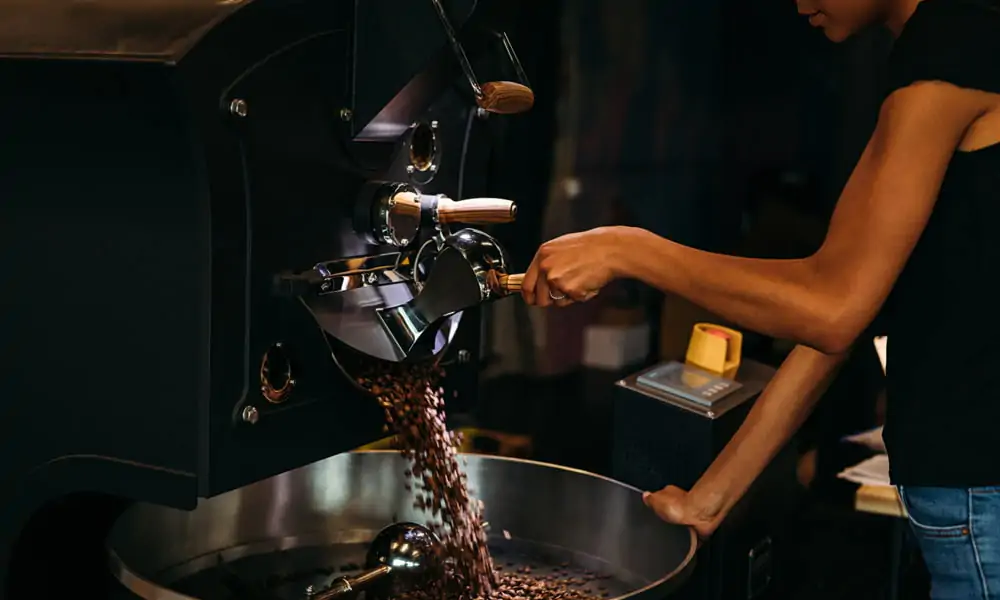Roasting your coffee beans can be a fulfilling experience for coffee lovers. This drum roaster vs. air roaster guide will help you choose which is right for you.

One thing that always makes my day is when I roast coffee beans in the oven. The aroma is immaculate, and funnily enough, it is a sort of cue to my neighbors that my refuge is open for socialization. After all, I enjoy my cup of Joe if I can share it with someone, especially during weekends.
The downside is the beans are roasted unevenly, and when I have to use the oven for cooking, I have to clean thoroughly and wait for the smell to subside so it won’t affect the food. It is a bit of a hassle; that is why it has become a goal of mine to have a coffee roaster at home – whether for establishing my coffee business someday or for my personal use.
So, this drum roaster vs. air roaster guide will determine the pros and cons of the most popular home roasters.
What Is A Drum Roaster And An Air Roaster?
The drum roaster got its name because of its cylindrical-shaped container where the coffee beans are roasted. Inside it is its arms or mixing shovels which rotate to roast the beans evenly, though some designs have the actual drums rotating.
Underneath is where you will find the heat source – either electric, gas, or coal. The beans are then roasted via conduction and convection.
On the other hand, the air roaster utilizes convection. It works by blasting hot air inside the container, which lifts the coffee beans and tumbles them around, giving an impression that it is floating. What makes it float is the hot air that is roasting the beans evenly.
Similarities Between The Drum And Air Roaster
Both roasters rely on hot air to roast the coffee beans uniformly. They also come in different sizes depending on your preference. There are industrial sizes if you’re planning to open a coffee roaster or a much more compact one for personal use.
When it comes to technicalities, however, they couldn’t be more different.
You might want to check out our guide on how to roast coffee beans at home!
Drum Roaster Vs. Air Roaster: The Differences
| Drum Roaster | Air Roaster |
| Uses conduction and convection. | Convection only. |
| Uses arms to stir coffee beans. | Uses high-pressure hot air to stir coffee beans. |
| Unable to remove coffee bean chaffs/skin. | Generally has a separate container for chaffs. |
| Takes eight to 15 minutes to roast, depending on the size of the batch and roast preference. | Takes around five to eight minutes to roast on average, depending on batch size and roast preference. |
| Generally larger in size and louder to operate. | Compact and slightly quieter. |
| Slightly more expensive. | Slightly cheaper. |
What’s Better About The Drum Roaster?

The drum roaster’s chamber can hold more coffee beans than its counterpart. This is ideal if you are planning to roast a large batch.
In terms of taste quality, it can create a bolder, more flavorful, and more complex coffee. There is a reason why professional roasters still prefer this machine over anything else.
A glaring drawback is that it is incapable of removing the chaffs. These stick to the searing hot drum, which burns and releases smoke that will cling to your beans and give them a smoky flavor. If that is not your cup of Joe, that can be bad news for you.
Check out our reasons why you should buy your coffee from a roastery.
What’s Better About The Air Roaster?
An air roaster is better suited for home roasting as you can usually put it on the kitchen tabletop. Though there are small drum roasters nowadays that can be considered compact, it is still bulkier than the air roaster.
One big advantage of this machine is that it has a tray that collects the chaffs once it separates from the coffee beans.
Another edge of the air roaster is its roast consistency, as the drum roaster has residual heat from the drums, which can unnecessarily cook the beans for a time. Even so, this uniformity has a downside as some might find the coffee’s flavor boring. It doesn’t provide that twist that drum-roasted beans have.
Who Should Get The Drum Roaster (And Why)?
I recommend a drum roaster for those serious about learning the art of roasting, as the machine requires dedication to master. If you don’t mind playing around with the flavor or are a dark roast person, this is for you.
This is also ideal for those planning to open a coffee business as it can process a large batch for selling and distribution, though you might need to hire a roast master or learn the process yourself before you can do so.
Who Should Get The Air Roaster (And Why)?

The air roaster is perfect for beginners trying to grasp the basic types of roast and just want a quality roasted bean to ground. The machine is much more user-friendly, has a faster roasting time, and provides a flawless roast every time.

